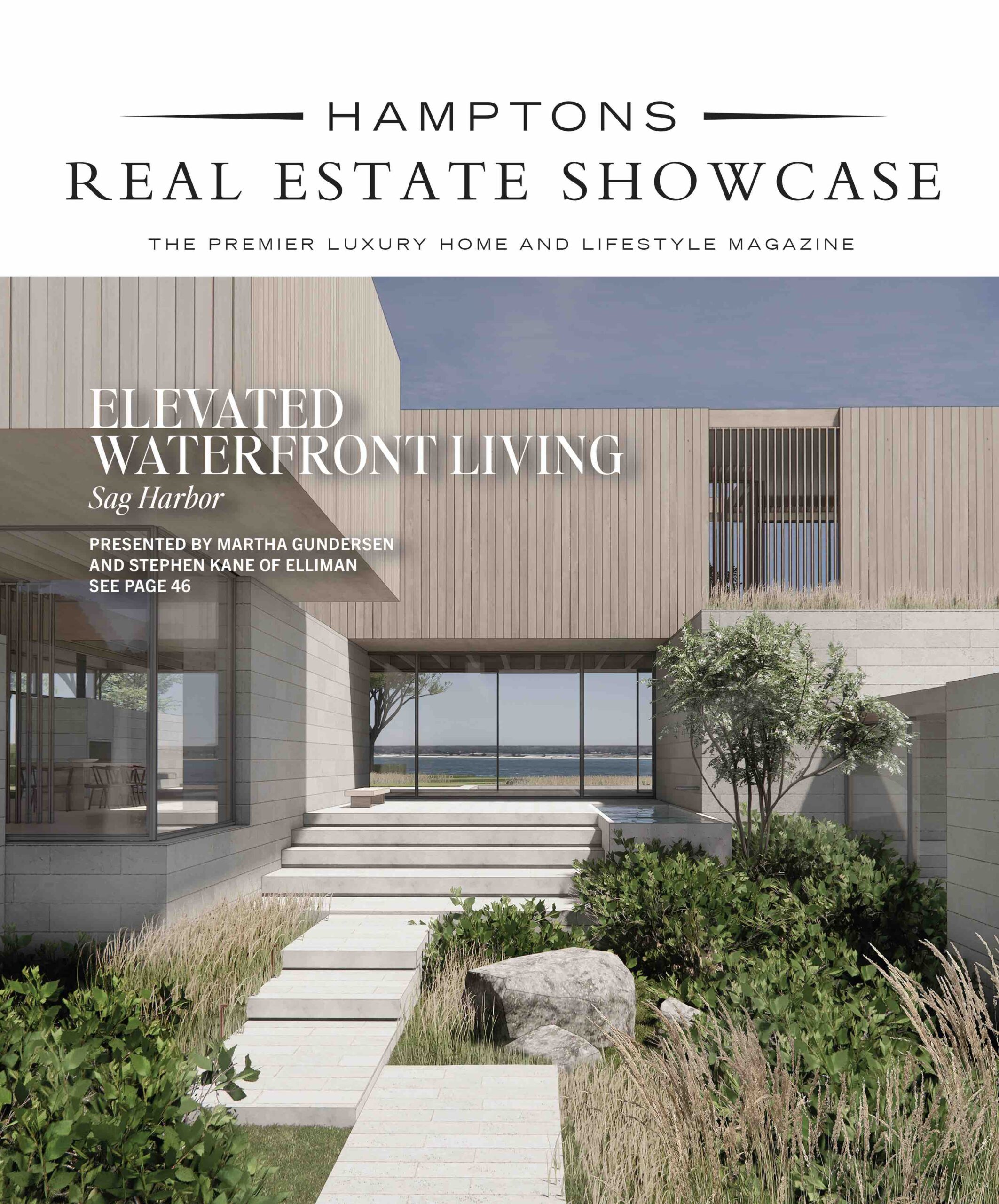An estate in Southampton designed by Gilded Age architect Grosvenor Atterbury is for sale.
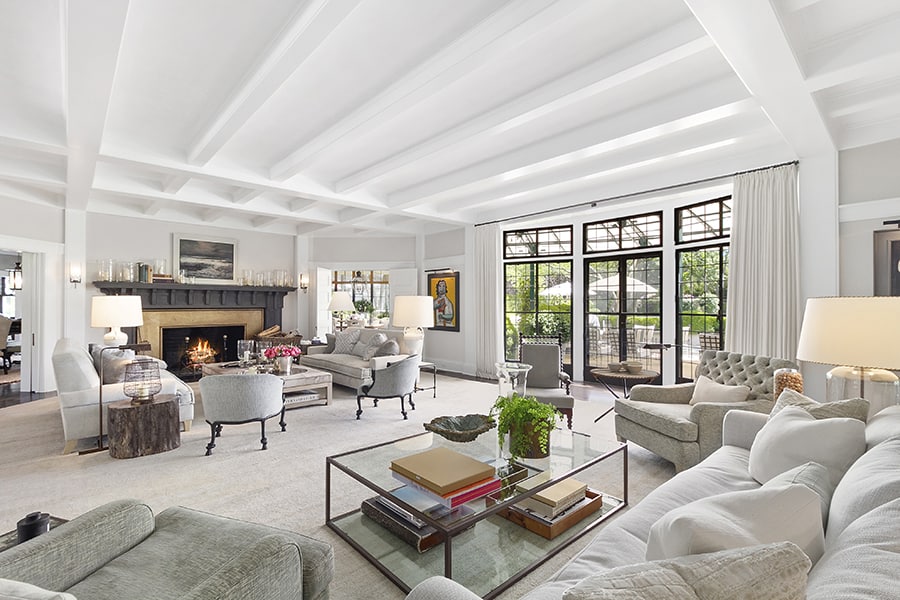
New-build houses aren’t hard to come by in the Hamptons. Neither, for that matter, are elfin historic homes on miniature plots of land, modern castles and Brutalist barns, shingled cottages, designer pre-fabs and farmsteads from every era. If you’re in the market for any of the above, you’re in luck. If, however, a historic, impeccably preserved mansion with original architectural details and pristine interiors on parklike estates is what you’re seeking, you will soon discover that such properties are in short supply. And so you would do well to visit the sprawling and capacious Linden Estate on Ox Pasture Road in Southampton, which is represented by Tim Davis of The Corcoran Group.
The 18,000-square-foot, 12-bedroom, 12-bathroom mansion was designed by the Gilded Age architect Grosvenor Atterbury (1869-1956) in 1899. One of Atterbury’s most personal projects, the house was inspired both by Sugarloaf, his family’s much-loved second home in the Shinnecock Hills, where they summered, and by the great manor houses of western Europe. Oak paneling, a hand-carved plaster ceiling, exposed beams, and other architectural appointments convey a sense of European gentility, as does the exterior with its terracotta roofline and leaded glass windows. Atterbury named this unusual property Linden Estate, after the lime trees on the once 17-acre parcel (since subdivided, it is currently 9.11 acres) — a vast greensward that was landscaped by Frederick Law Olmsted, commonly known as the man who designed Central Park.
Though Atterbury began his career as an apprentice at McKim, Mead & White, one of the top architecture firms of its day, and he later designed his share of country houses on Long Island, he was not solely a society architect. He was also intellectually engaged with questions of social housing and city planning, and he experimented with materials and techniques that lent themselves to low-cost projects. But when it came to the houses that comprised his summer colony practice, he did not stint on size or luxury, and he let his formidable imagination roam free.
Nowhere in the Hamptons is his talent on more extravagant display than at Linden Estate, which features eight wood-burning fireplaces, two swimming pools (indoor and outdoor), a fully equipped rotunda-like gym with floor-to-ceiling windows all around, a steam room, separate staff quarters, a carriage house with its own greenhouse, and a grass tennis court.
“The house has a remarkable history and great historic architecture,” says Steven Gambrel, the AD 100-listed architect whom the current owners hired to remodel the estate. To create its flawless interiors, Gambrel took his bearings from Europe, namely the great manor houses found on the continent, just as Atterbury did so many years before. Gambrel was seeking, he says, to emulate the “warmth and utility” of those architectural delights. To this end, he and his team determined to make every room “livable, layered with rich materials.”
The estate is no period piece, however. On the contrary, Gambrel’s interiors seamlessly blend old and new. To say nothing of the ultra-modern amenities such as a spa and a pool house that is a veritable glass box, which he co-designed with his colleague Umberto Plaja. The latter addition, which was manufactured in Polenz, Germany, even has a full kitchen. And then there is the spectacular glass pavilion connected to the main house which shelters a heated indoor pool with a whimsical red slide and waterfall. Gambrel pulls off a delicate balancing act — no simple feat in a house that encapsulates centuries.
For all that Linden Estate harks back to the Gilded Age, it also seems like a retreat that is very much of its time, which is to say from our time. “Linden Estate happens to surpass all the current trends — ample space, large public rooms for entertaining, intimate rooms for working at home in privacy, sports such as indoor swimming, tennis, major gym facilities, and treatment rooms,” observes Gambrel. “We even designed a family office to manage complex lives and real estate portfolios. Guests have their separate wing, and everyone feels well-accommodated.”
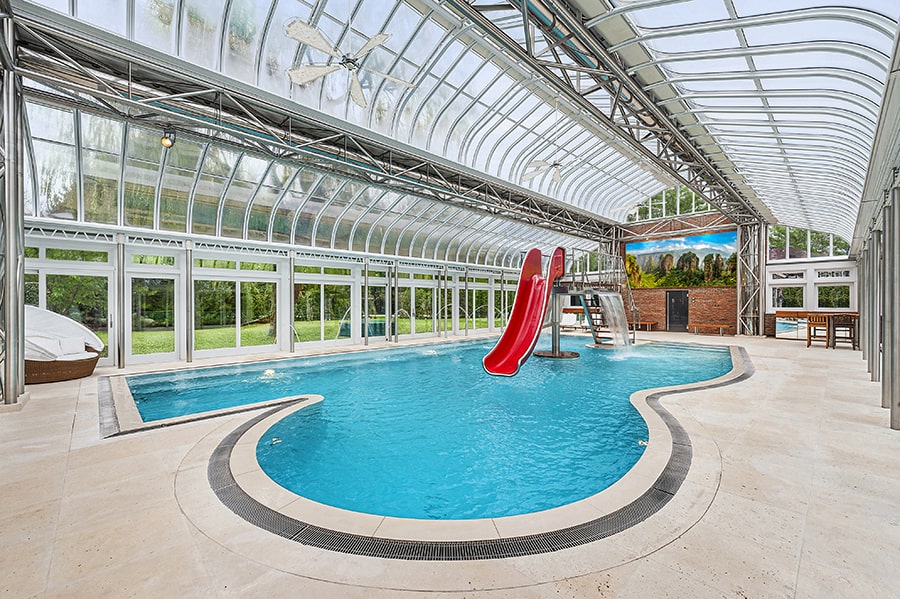







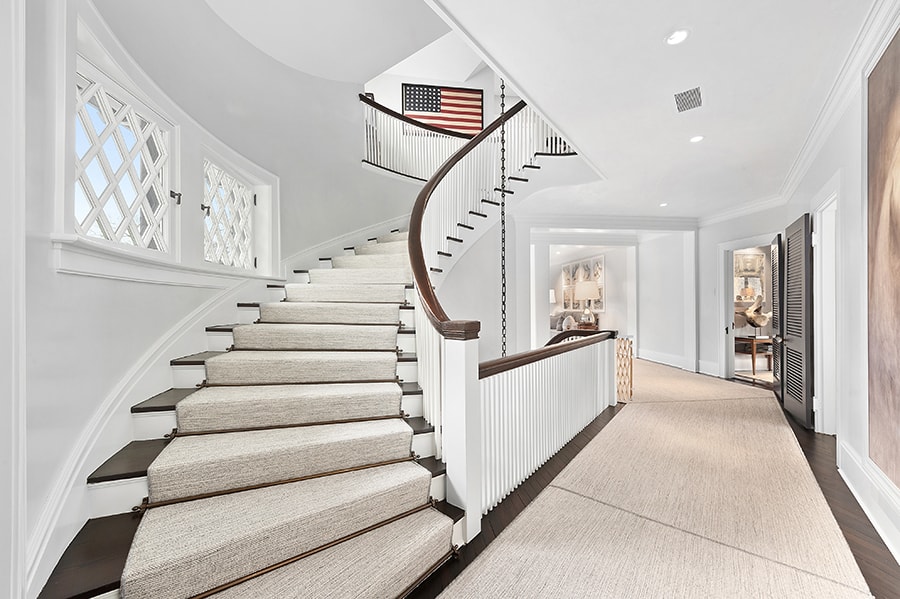
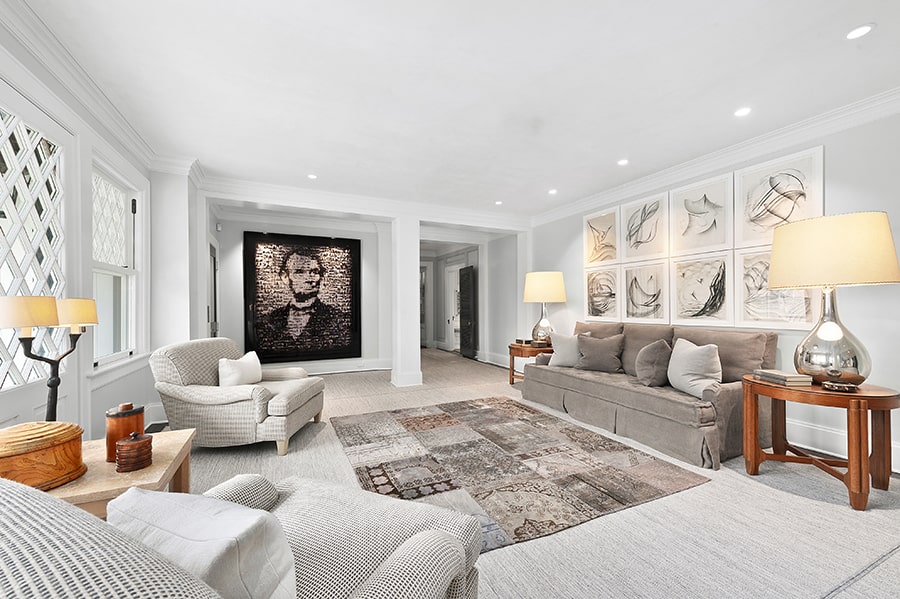
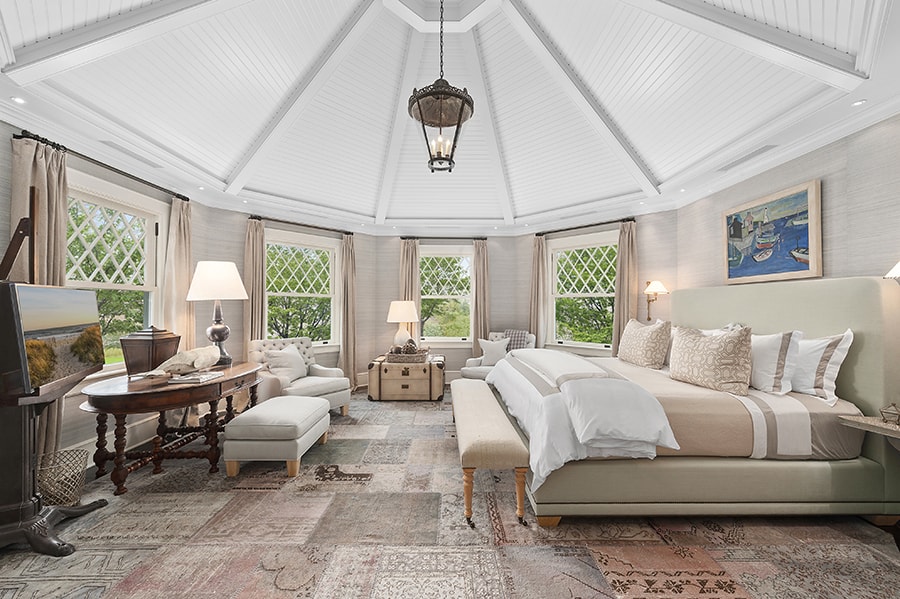
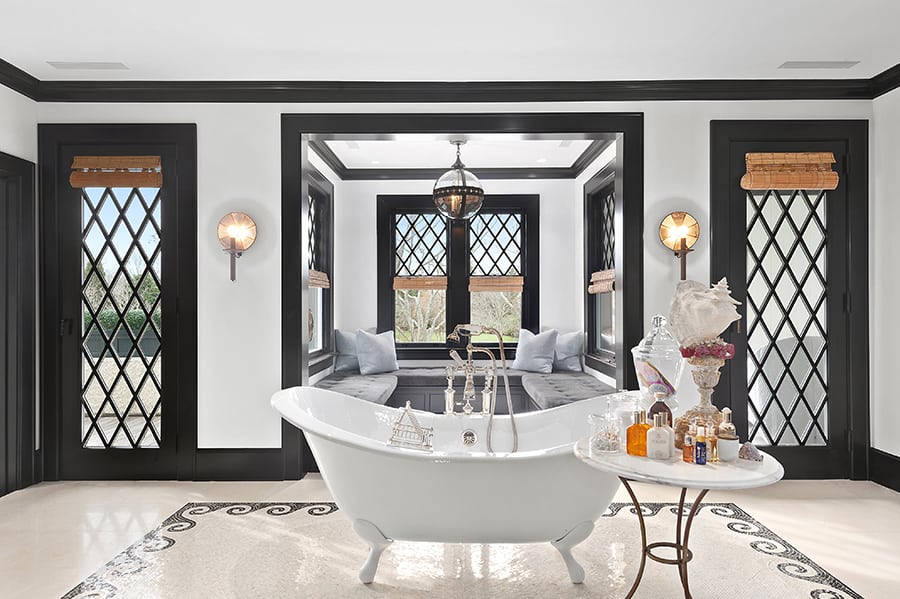







![Experience luxury, privacy, and resort-style living at this exceptional Shelter Island compound 🌳 139 N Ferry Road is a hidden gem featuring a custom-built main house, a gunite pool, radiant heat throughout, and a 1 bedroom guest apartment, all tucked away on 1.1± secluded acres.
Saturday, July 12th | 10am-12pm
Contact @annmarieseddio of @atlassalesrealty for more details. We hope to see you there! [link in bio]](https://hamptonsrealestateshowcase.com/wp-content/uploads/sb-instagram-feed-images/517355052_18521041705030135_8404531768775791793_nfull.webp)


![When clients bring bold ideas to the table, magic can happen. In Sag Harbor, interior designer Jessica Gersten crafted a light-filled, seven-bedroom home layered with sculptural details, playful textures, and statement pieces, including a forged-iron swing and a custom light fixture that anchors the double-height stairwell. The result is a space that feels as bold as it is livable. [link in bio]](https://hamptonsrealestateshowcase.com/wp-content/uploads/sb-instagram-feed-images/516636957_18520674460030135_5909864759900962270_nfull.webp)


![Tucked along the shoreline of West Neck Harbor, this Shelter Island retreat offers a rare opportunity for relaxed waterfront living. ☀️⚓ With a waterside pool, deep water dock, guest cottage, and 220± feet of bulkhead frontage, every inch of the property is designed to embrace the outdoors. Inside, rich architectural details, sun-filled rooms, and elegant entertaining spaces blend comfort with character, making this a true summer escape.
37 East Brander Parkway, Shelter Island
Represented by Rebecca Shafer @myshelterisland of @thecorcorangroup [link in bio]](https://hamptonsrealestateshowcase.com/wp-content/uploads/sb-instagram-feed-images/515283061_18519694612030135_1293239383085970748_nfull.webp)
